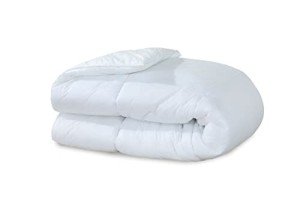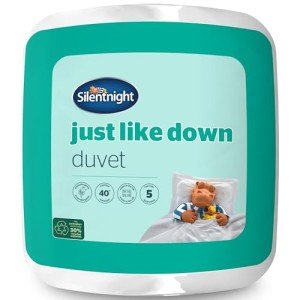The Benefits of Using a Lightweight Hypoallergenic 10.5 Tog Single Duvet
When it comes to creating a restful sleep environment, the choice of bedding plays a crucial role. Among the various bedding options available on the market, lightweight hypoallergenic duvets stand out, particularly the 10.5 tog single duvet. This guide explores the features, benefits, and considerations surrounding lightweight hypoallergenic duvets, especially in the context of a 10.5 tog single duvet.
What is a 10.5 Tog Duvet?
The "tog" rating is a measure of thermal insulation. A duvet's tog rating indicates how warm the duvet will be; the higher the tog rating, the warmer the duvet. A 10.5 tog duvet is often regarded as a versatile option, making it suitable for year-round use. It strikes a balance between being warm enough during the colder months while remaining breathable and comfortable for warmer weather.
Why Choose a Lightweight Hypoallergenic Duvet?
Opting for a lightweight hypoallergenic duvet presents several advantages, particularly for individuals with allergies or sensitivities. Following are the top benefits of using a lightweight hypoallergenic 10.5 tog single duvet:
1. Allergy Relief
- Reduced Allergen Exposure: Hypoallergenic duvets are designed to resist common allergens, such as dust mites, mold, and pet dander. They are often made from materials that deter these irritants, providing a safer sleeping environment for allergy sufferers.
- Easier to Clean: Many hypoallergenic duvets are machine washable, allowing for easy maintenance. Regular washing can help to reduce any accumulated allergens.
2. Comfort and Sleep Quality
- Lightweight Design: A lightweight duvet is less cumbersome than heavier options, providing a feeling of freedom of movement without sacrificing warmth. This can lead to improved sleep quality for those who tend to feel confined by bulkier bedding.
- Moisture Regulation: Lightweight fabrics generally exhibit better breathability, helping to manage temperature and moisture levels throughout the night. This is particularly beneficial for people who naturally run hot while sleeping.
3. Versatility
- All-Season Use: The 10.5 tog rating makes this duvet suitable for various seasons. It can provide warmth in winter while remaining comfortable in spring and autumn, making it a practical investment for any bedding collection.
Considerations When Choosing a Duvet
When choosing a duvet, particularly a lightweight hypoallergenic 10.5 tog single duvet, several factors should be considered to ensure it meets individual needs and preferences.
Factors to Keep in Mind:
- Material: Look for duvets made from hypoallergenic materials such as microfibre, bamboo, or special synthetic fillings that resist allergens.
- Fill Power: This refers to the quality of the insulation inside the duvet. Higher fill power indicates better thermal insulation and lighter weight.
- Cover Fabric: Opt for a duvet cover made from breathable materials like cotton or Tencel, as this can enhance comfort while maintaining hypoallergenic properties.
- Maintenance Requirements: Check the care instructions to ensure that the duvet is machine washable and easy to maintain.
- Comfort Preferences: Individual preferences play a significant role. Consider factors like weight preference, warmth, and sleeping position when selecting a duvet.
Comparison Table: Lightweight Hypoallergenic Duvets
| Feature | 10.5 Tog Single Duvet | 4.5 Tog Single Duvet | 13.5 Tog Single Duvet |
|---|---|---|---|
| Warmth | Moderate | Light | Higher |
| Weight | Lightweight | Very Lightweight | Heavier |
| Best for seasons | Year-round | Summer | Winter |
| Hypoallergenic | Yes | Yes | Yes |
| Maintenance | Easy care | Easy care | Moderate care |
| Price Range | £ |
| £ | ££ |FAQs About Lightweight Hypoallergenic 10.5 Tog Single Duvets
1. What materials are considered hypoallergenic for duvets?
Hypoallergenic duvets may include synthetic fibers, bamboo, cotton, and microfibre. These materials are engineered to repel allergens and can be safely washed without degradation.
2. How often should I wash my duvet?
It is recommended to wash your duvet every 3-6 months. However, if you have allergies or pets, washing it every 2-3 months could be beneficial.
3. Can a 10.5 tog duvet be used in summer?
Yes, a 10.5 tog duvet can be suitable for summer use, particularly in cooler climates or air-conditioned rooms. Its balanced insulation makes it versatile for varying temperatures.
4. Is a heavyweight duvet better for warmth?
Not necessarily. The warmth of a duvet depends not only on the tog rating but also on the fill power and insulation quality. Lightweight duvets can provide sufficient warmth without bulk.
5. Are hypoallergenic duvets more expensive?
Generally, hypoallergenic duvets may cost a bit more due to the materials and technology used in their production. However, their benefits can justify the investment for allergy sufferers.
A lightweight hypoallergenic 10.5 tog single duvet can enhance sleep quality while providing essential comfort and relief for allergy sufferers. Given its versatility and ease of maintenance, it serves as a valuable bedding choice for individuals seeking a peaceful night’s sleep. By considering the factors mentioned above, consumers can make informed choices to ensure that they select the best duvet for their individual needs.






